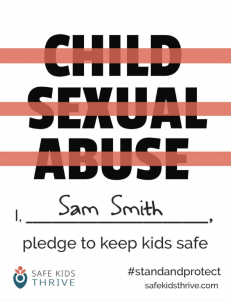Read the Report
Home / Read the Report
What Is Child Abuse & Neglect
For purposes of this report, the words “child” and “youth” are sometimes used interchangeably. Massachusetts law 1 on the care and protection of children defines a child as a person under the age of 18. However, when a distinction needs to be made that differentiates younger and older minors by age or developmental stage, a child is defined in this report as an individual between newborn and age 11, and a youth is defined as an individual between age 12 and the attainment of their 18th birthday.
Child maltreatment can be defined generally as any type of cruelty inflicted upon a child, including mental or emotional abuse, physical harm, neglect, sexual abuse, sexual exploitation or human trafficking (both sex trafficking and labor trafficking). It is not uncommon for a child to be the victim of several types of maltreatment at the same time. 2 All states have child abuse prevention statutes and regulations that define these basic categories, but specifics do vary. DCF regulations (110 CMR, Section 2.00) offer the following definitions of the various types of child abuse and neglect for the Commonwealth:
Abuse:
The non-accidental commission of any act by a caretaker upon a child under age 18 which causes, or creates a substantial risk of physical or emotional injury; or constitutes a sexual offense under the laws of the Commonwealth; or any sexual contact between a caretaker and a child under the care of that individual. This definition is not dependent upon location (i.e., abuse can occur while the child is in an out-of-home or in-home setting).
Neglect:
Failure by a caretaker, either deliberately or through negligence or inability, to take those actions necessary to provide a child with minimally adequate food, clothing, shelter, medical care, supervision, emotional stability and growth or other essential care; provided, however, that such inability is not due solely to inadequate economic resources or solely to the existence of a handicapping condition. This definition is not dependent upon location (i.e., neglect can occur while the child is in an out-of-home or in-home setting).
Emotional Injury:
Is an impairment to or disorder of the intellectual or psychological capacity of a child as evidenced by observable and substantial reduction in the child’s ability to function within a normal range of performance and behavior.
Physical Injury:
Death, or fracture of a bone, subdural hematoma, burns, impairment of any organ, and any other such nontrivial injury; or soft tissue swelling or skin bruising, depending on such factors as the child’s age, circumstances under which the injury occurred, and the number and location of bruises; or addiction to a drug or drugs at birth; or failure to thrive.
Institutional Abuse or Neglect:
Abuse or neglect which occurs in any facility for children, including, but not limited to, group homes, residential or public or private schools, hospitals, detention and treatment facilities, family foster care homes, group day care centers and family day care homes.
Sexually Exploited Child: 3
Any person under the age of 18 who has been subjected to sexual exploitation because such person:
- Is the victim of the crime of sexual servitude pursuant to section 50 of chapter 265 or is the victim of sex trafficking as defined in 22 United States Code 7105.
- Engages, agrees to engage or offers to engage in sexual conduct with another person in exchange for a fee, in violation of subsection (a) of section 53A of chapter 272, or in exchange for food, shelter, clothing, education or care.
- Is a victim of the crime of inducing a minor into prostitution under section 4A of chapter 272.
- Engages in common night walking or common streetwalking under section 53 of chapter 272.
Human Trafficking: 4
A person who is subjected to harboring, recruitment, transportation, provision, obtaining, patronizing, or soliciting for the purpose of:
- Sex trafficking (i.e., inducement to perform a commercial sex act, forced sexual services and/or sexually explicit performance).
- Labor trafficking (i.e., forced services, involuntary servitude, peonage, debt bondage or slavery).
For additional information about what adults must do under the law when child maltreatment is suspected, observed or disclosed see Section 5: “Recognizing, Responding to, and Reporting Allegations and Suspicions of Child Sexual Abuse”.
1 MGL, Chapter 119, Section 21
2 Finkelhor, D., Turner, H., Hamby, S., and Ormrod, R. (2011). Polyvictimization: Children’s Exposure to Multiple Types of Violence, Crime, and Abuse. National Survey of Children’s Exposure to Violence, Office of Juvenile Justice and Delinquency Prevention, Bulletin: (https://www.ncjrs.gov/pdffiles1/ojjdp/235504.pdf)
3 as defined in MGL c. 119, § 21
4 based on MGL c. 233, § 20M and MGL c. 265, §§ 50 and 51
- Acknowledgements
- Executive Summary
- Introduction
- How to Read This Report
- Mission & Purpose of Taskforce
- A Brief History of How the Taskforce Was Organized
- The Charge of the Legislative Language
- Key Sections
- Section 1: Developing Policies and Procedures for Child Protection
- Section 2: Screening and Background Checks for Selecting Employees and Volunteers
- Section 3: Code of Conduct and Monitoring
- Section 4: Ensuring Safe Physical Environments and Safe Technology
- Section 5: Recognizing, Responding to, and Reporting Allegations and Suspicions of Child Sexual Abuse
- Section 6: Training About Child Sexual Abuse Prevention
- Additional Considerations
- Applying the Framework: A Five-Year Plan
- Appendices
- Section-Specific Appendices
- Downloadable Resources

Take the Pledge to Keep Kids Safe
Join us and commit to learning how you can protect the children/youth you serve.
Sign Up to Access Your Learning Center
Customized child sexual abuse prevention guidelines to meet the unique needs of any organization that serves children.
- Evidence-informed guidance
- Actionable prevention steps
- Keeps track of your progress
- Tailored learning tracks


